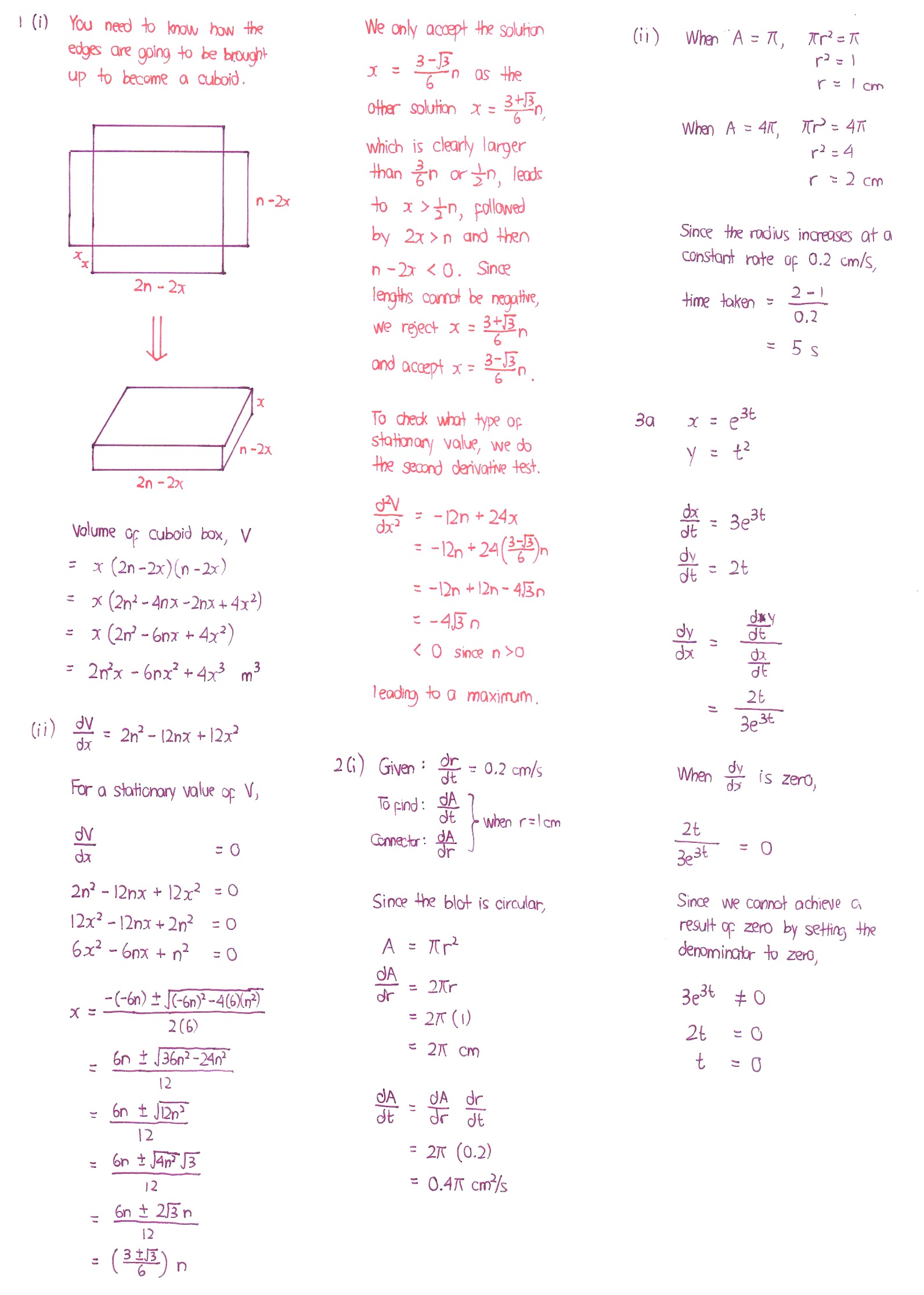
 360 Tutoring Program
360 Tutoring Program
*If you qualify, the Free 360 Tutoring Program will be extended to you at no extra charge.
On top of the tutor you are getting, ManyTutors will provide unlimited free tutors to help you with any questions you may have for other subjects. Just snap a photo of your homework, post, and someone will provide the solution for free.
You will get a complimentary premium account on Ask ManyTutors that allows you to ask English, Chinese, Malay, Math, Science, Geography and History homework questions free of charge.
Under the 360 Program, the tutor will receive a different rate from what you are paying to ManyTutors.


dV/dx = 2n² - 12nx + 12x²
For stationary value of V, dV/dx = 0
2n² - 12nx + 12x² = 0
6x² - 6nx + n² = 0
Using quadratic formula,
x = ( -b ± √(b² - 4ac) ) / 2a
x = ( -(-6n) ± √((-6n)² - 4(6)(n²)) ) / 2(6)
x = ( 6n ± √(36n² - 24n²) ) / 12
x = ( 6n ± √12n² ) / 12
x = ( 6n ± √(3 x 4n²) ) / 12
x = (6n ± 2n√3) /12
(we can square root 4n² to get 2n.
No need to worry about ± sign here as n is positive, so 4n² is also positive and the square root of a positive is represented by the principal root.
eg. √4 = 2 and not -√2 )
x = ½n ± ¹⁄6 n√3
Now,
When x = ½n + ¹⁄6 n√3,
2x = n ± ⅓ n√3
Since n > 0, then ⅓ n√3 > 0
So n + ⅓ n√3 > n and n - ⅓ n√3 < n.
n + ⅓ n√3 > n implies that 2x > n.
That is not possible as the the width of the box must be greater than the sum of the 2 sides of the squares. I.e n > 2x
So x = ½n + ¹⁄6 n√3 is rejected.
Therefore x = ½n - ¹⁄6 n√3
dV/dx = 2n² - 12nx + 12x²
So d²V/dx² = 24x - 12n
= 24(½n - ¹⁄6 n√3) - 12n
= 12n - 4n√3 - 12n
= -4n√3 < 0
(since n > 0, which means 4n√3 > 0)
So the minimum value of V is obtained when x = ½n - ¹⁄6 n√3
Indeed, we don't need a calculator at all to answer this question completely.